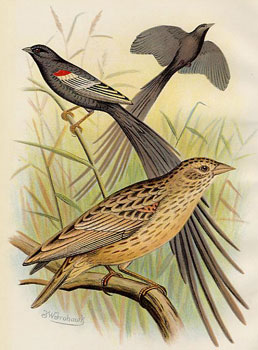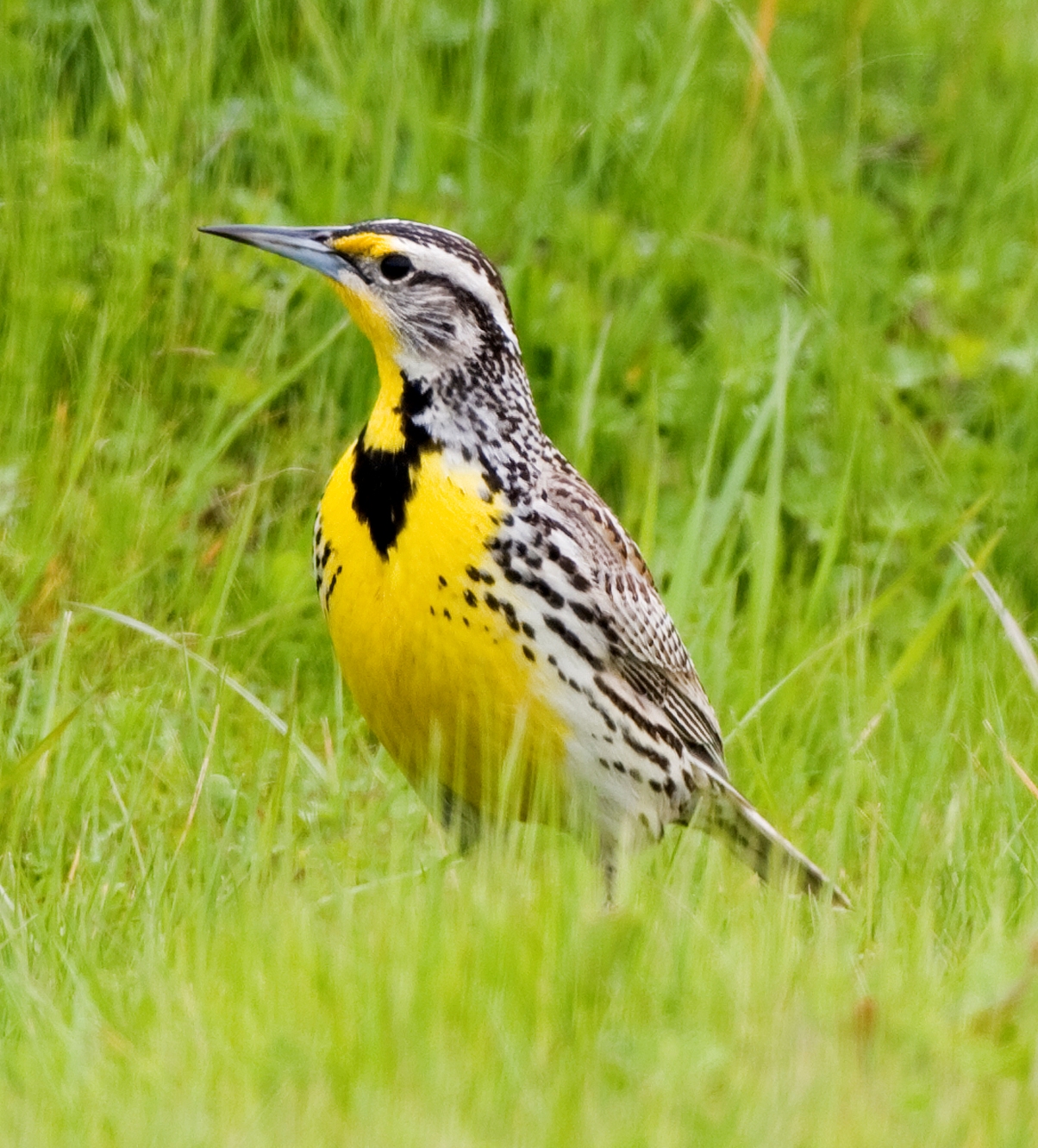Natural selection is a topic that is relatively well known. Less immediately apparent, but exceptionally fascinating is the phenomenon of convergent evolution. Because they stand out so well, possess distinctive patterns and are easily viewed, birds are some of the best examples of convergent evolution, where species are not closely related, but are nearly identical in appearance.
Take the Long-tailed Widowbird (below right), for instance. This spectacular African Songbird belongs to a group of old world birds closely allied to Whydahs and Weavers. However, its appearance almost completely aligns with the markings of North America's much better known Red-winged Blackbird, an entirely separate relative of Orioles and Grackles. A substantial difference is its ridiculously long tail, presumed to be an adaptation derived through sexual selection. Many birds shed these "ornaments" outside of nesting season to avoid the cost and risk of carrying around such "baggage". Like the Red-winged Blackbird (below left), this prominent species is one of the most common birds in its range.
  |
 If that were not enough, the Meadowlark (below right), another North American Oriole and New World Blackbird relative is almost perfectly matched in plumage right down to the finest detail. In this case, the "culprit" is also from the Afro-tropical Region. The Sharpe's Longclaw (below left), an endangered grassland bird depends on very similar habitat to the meadowlark, but instead, it is part of the unrelated, mostly old world family motacillidae (pipits and wagtails).
If that were not enough, the Meadowlark (below right), another North American Oriole and New World Blackbird relative is almost perfectly matched in plumage right down to the finest detail. In this case, the "culprit" is also from the Afro-tropical Region. The Sharpe's Longclaw (below left), an endangered grassland bird depends on very similar habitat to the meadowlark, but instead, it is part of the unrelated, mostly old world family motacillidae (pipits and wagtails). All these birds are found in the order Passeriformes, or perching birds, colloquially known as the "songbirds". When compared to mammals, such similarities among distinct animal families could be likened to finding a weasel that resembles a dog, or a mouse that looks and acts like a beaver.

.jpg/220px-Yellow-throated_Longclaw_(Macronyx_croceus).jpg)

